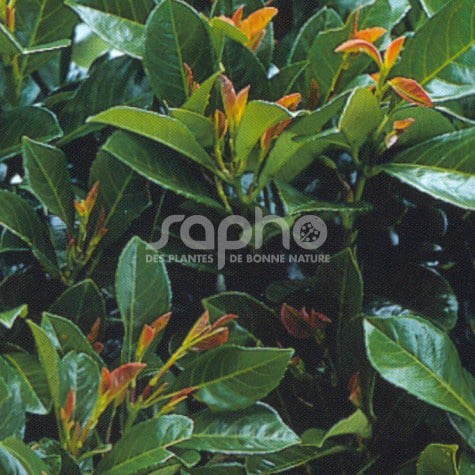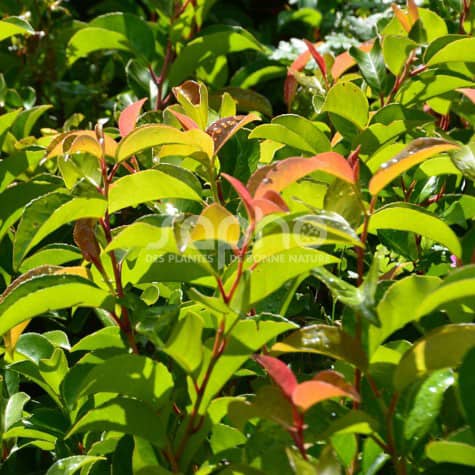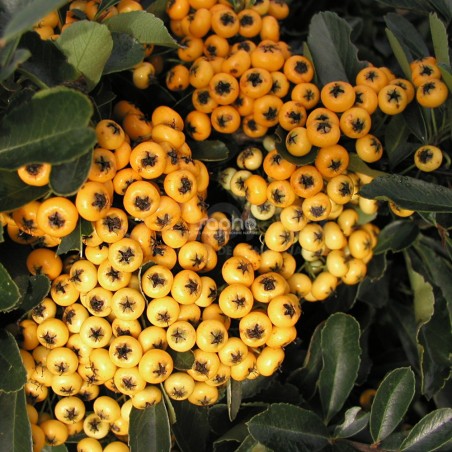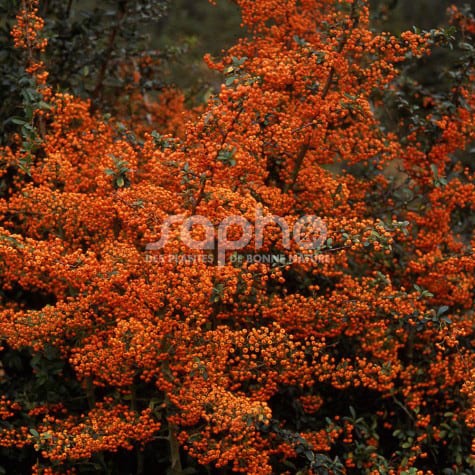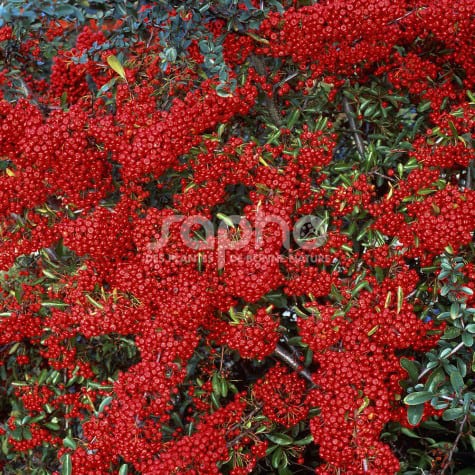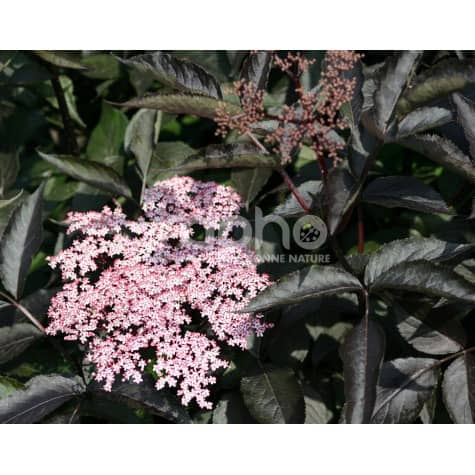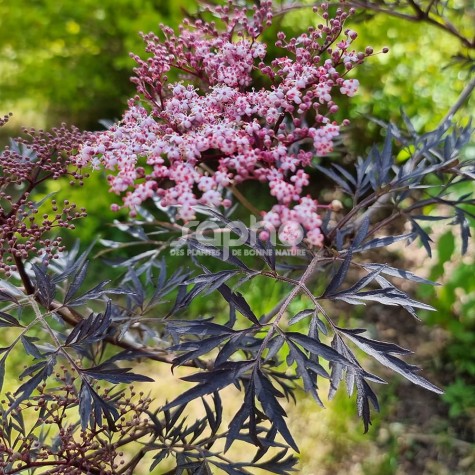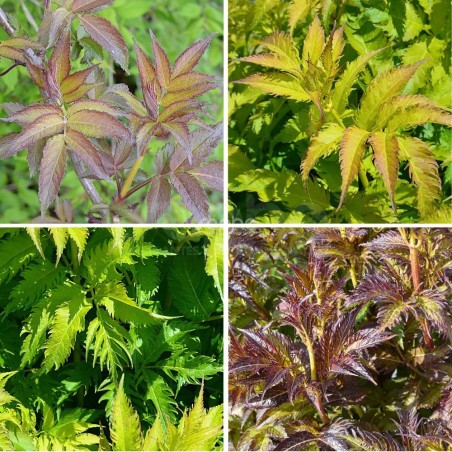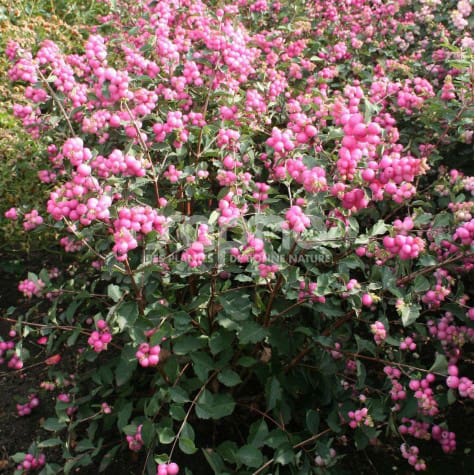Little springtime vulcanos for a low hedge.This variety of laurel with elegant branches naturally reaches a height of about 2 m and a spread of 1.50 m, all the while keeping its compact shape. It is of medium to slow growth.The coppery young shoots are decorative and contrast well with the shiny dark green foliage, which is evergreen.The creamy white flowers in May are followed by deep violet berries.ETNA® tolerates pruning and is recommended for the composition of moderate sized hedges (up to 0.80 m). Mixed with other shrubs, it brings an evergreen touch to beds. It can also be used in containers.Trophies: Gold medal at the Plantarium 1994. (Boskoop - NETHERLANDS)
Filter By
Foliage
Position
Where to find Sapho plants ?
For young plants
You will find the names of Sapho-licensed nurserymen at the bottom of each variety sheet.
For available plants
Please ask your nursery suppliers.
Each licensed propagator is free to market his young plants to all his customers.
Categories
Menu
All our varieties
For a naturally narrow and hardy hedge.This Prunus laurocerasus has been cultivated in Switzerland for its erect and narrow growth. It only needs light pruning.It reaches a height of 3,50 m and a width of 1.00 m when free growing.The foliage is shiny dark green, quite elongated and resists well to low temperatures.GENOLIA® does not thin out at the base and can stand the weight of snow thanks to its erect and strong branches.It has discrete flowers and the fruits are not very abundant.This variety is ideal for a narrow hedge.Trophies: Silver Medal at PLANTARIUM 2005 (Boskoop - NETHERLANDS)
Worth a try: a new evergreenThis new evergreen is an asset for the producer: its growth is vigorous and it forms very well. The young shoots offer a pretty bronze shimmer, later the foliage turns bright light green, which contrasts with the red petioles. In the autumn it turns bronze green.The slightly flared and drooping shape as well as the small and curled leaves give the shrub a light and natural silhouette.Very hardy for a Prunus azorica. Ideal for the revival of hedges!
Yellow fruits for this resistant Pyracantha of the SAPHYR® range.This cultivation has all the characteristics of the SAPHYR® range.SAPHYR® Jaune 'Cadaune', very vigorous, bears, from Mid-October, numerous yellow berries, which last a long time, later turning to yellow-orange.
Hardy Pyracantha of the SAPHYR® range with orange berries.This variety has all the characteristics of the SAPHYR® range.SAPHYR® Orange 'Cadange', fast growing, has a profusion of big bright orange berries from September onwards, lasting the best part of the winter.
Hardy Pyrancantha of the ; SAPHYR® range, with red berries.This variety has all the characteristics of the SAPHYR® range.SAPHYR® Rouge 'Cadange', medium fast growing.From September onwards until December, it bears an abundance of big, shiny, bright red berries finally turning orange at the end of the season.
A highly fructiferous tayberry
Tayberries are a cross between a blackberry and a raspberry. Bounty Berry is a new variety which is notable for the generous quantity of fruit it produces: 35 kg from its second year of planting on. It has the flavour of raspberries and the vegetation of blackberries. Fast-growing in spring, it should be tied to a support and can then be easily trained on a trellis. Its white flowers grow quite early, appearing from May to July. Its tasty fruits ressemble big, very long raspberries which are violet-pink when they mature in July and August.
Trophy :
Jard'innov 2021 Gold Trophy
A purple elder all summer long.The purple, nearly black colour of this variety of Elder lasts all summer long. The shrub tolerates half shade, but planting it in full sun, emphasizes the beautiful colour of the foliage. Its growth is bushy with straight branches.In May - June, the big, delicate flowers are deep pink, turning light pink and finally white, contrasting well with the dark foliage. They are pleasantly lemon scented.At the end of summer, the dark purple, later black berries are appreciated by the birds.BLACK BEAUTY should be planted individually or in free growing shrub-hedges, together with evergreens, for example.Its purple colouring is a precious asset for colour variations in hedges. Its flowers and berries are of strong ornamental interest.
Purple and lacinated, a very decorative elder
This elder is very elegant thanks to its big, deep purple, nearly black, finely dissected leaves. The young shoots are green. The shrub tolerates half shade, but planting it in full sun, emphasizes the beautiful colour of the foliage. Its growth is medium.In June, BLACK LACE is covered in flat, pink buds, getting paler at the opening stage to become a creamy white. The contrast to the dark foliage is remarkable.At the end of summer, the dark purple then black berries are appreciated by the birds.Its purple and lacinated foliage, its abundant flowers and berries make it an decor for the garden. BLACK LACE should be planted individually or in free growing shrub-hedges, together with evergreens, for example.
Dark purple elder with an upright and thick shape.BLACK TOWER has an interesting upright and naturally thick shape.Its young shoots are green. Then the large-sized foliage becomes deep purple brown, covering the plant from the base upwards.In June - July, from a very young age, nearly at every node, numerous quite small pink and white flowers open, contrasting with the foliage. Black fruit appear in the autumn.
A serenade of brilliant coloursThe compound and toothed leaves are at first purple brown as the buds burst, then turn bronze to golden yellow and end up light green. The shrub thus shows different shades simultaneously, giving it a shimmery effect. Plant in a sunny position to show off all these colours at their best. In the autumn the leaves turn purple again.From May - June the small creamy white inflorescences stand out harmoniously from the purple, yellow and green foliage. They are followed by black berries at the end of summer and in autumn.The shape of the shrub is erect and well branched.Among others for the decorative effect of its foliage, SERENADE is best used in beds and free standing hedgerows.
Compact with many fruits, a snowberry with deep pink berries.
This cultivation has all the characteristics of the snowberry of the MAGICAL® range. Candy has deep pink berries. MAGICAL®, Candy, Galxy and Sweet, distributed by SAPHO, are very attractive shrubs, thanks to their abundance of decorative flowers at the end of the season. These varieties can be associated with evergreens and other flowering shrubs, in mixed hedges or shrub borders. In pots, they brighten up entrances, balconies or terraces from August onwards, until the first frosts.
Trophies:
Silver medal at Plantarium 2007 (Booskop - NETHERLANDS)

